How to Coordinate Dining Furniture Like a Pro
The days of your Grandmother’s treasured 10-piece dining room set are no more!
With the busy holiday entertaining season right around the corner, we thought we’d take the opportunity to write about a topic that comes up often with our clients: The best way to create a “mix-and-match” look with dining room furniture.
For the last several years, the rising trend in dining room furniture has been to ditch matching sets in favor of a more curated or eclectic approach where the “set” is built by assembling a number of different, but coordinating table and chair options. The key word here is coordinating — the pieces should all work well together in form and function without being a perfectly matched set.
Since many old-school matching dining room sets are still (inexplicably) for sale today in spite of this trend, many people are hesitant to make the leap into a mix-and-match approach. They prefer to go with what they know by choosing a complete set right off of the showroom floor, or from a furniture brand’s website. We can’t fault this simple, foolproof approach, but who wants to play it safe?!
With this post, we’re hoping to take some of the guesswork out of coordinating your new dining set so you can achieve a more polished and interesting look in your home. The good news is that the same design principles can be applied whether you’re tackling a formal dining room or a more casual eat-in space, so no matter your scenario there should be some useful tidbits for you today!
Gather ‘Round the Table
To build your ideal mix-and-match set, you should start with the most important piece of furniture in the room — the dining table. It can be a little tricky to find the perfect piece for your space and needs, but here are some helpful considerations to help narrow your search:
Size
How many people does the table need to accommodate? Do you have a small or large family? How big is the room? Typically, you should try to allow for approximately 24” of space for each person seated at the table. Is this going to be an everyday space, or used only occasionally for entertaining or special meals?Shape
Consider your room’s shape and think about what table shape will work best. Round tables are great for small, intimate spaces. Rectangular tables are more traditional and typically seat the most people. Oval tables are a bit more elegant, while square can be more casual. Be sure to measure the space, and maybe even use painter’s tape to mock up how the table will feel in your room.Style + Material
Think about the décor styles that are already present throughout the room and the rest of your home. Are there many different woods, metals, or other materials nearby that you’ll want to coordinate with? How durable or easy to clean should the table be?Versatility
The way families gather and eat has evolved, and as a result dining tables have become more multipurpose spaces. Especially in today’s age of working from home, and remote learning, your new dining table might have to stand up to more than just meals.
Another thing to think about is how long you plan to keep this new table. If you are someone who likes to switch up your chairs, area rug, paint or wallpaper, window treatments, art, lighting, etc. more frequently, invest in a simple, quality table that can evolve alongside the other elements in the room over the years.
Pull Up a Chair
Once you settle on the perfect dining table, you can start to wrap your head around which dining chairs you’d like to use to complete your new set. When taking the mix-and-match approach, you have a few different avenues to explore…
You can go for something that’s a little more simple, keeping all of the dining chairs the same like this:
You can add a touch of flair by using matching side chairs, but then adding coordinating head chairs that are a more dynamic or substantial:
Or you can take a super bold and eclectic approach where no two chairs around your table are exactly the same:
To help avoid a chaotic or haphazard look (particularly with the last technique) try to include some unifying elements across your chair selections that helps to tie them all together. This could be color family, style, back height, wood or metal finish, upholstered or not, arm and leg profiles, etc.
And as a general rule of thumb, the more intricate or “busy” your chair selections are, the simpler your table style and finish should be. You want everything in your new set to work in harmony visually, not be competing with each other for attention.
Put the Pieces Together
While achieving the mix-and-match look you desire can seem daunting simply because there are so many options for tables and chairs, there are some simple tips and tricks that can help you find success. If you’ve read our recent posts, particularly How to Blend Different Décor Styles and The “Do’s and Don'ts” of Coordinating Light Fixtures, you’ll notice some similarity between the design principles we mentioned then and now.
Here’s what you should keep in mind as you build your dining room set:
Play with Contrast
Whether between the table and chairs, the different styles of chairs, or both, there should be contrast between the pieces to help you avoid that outdated “package deal” look with your dining furniture. Things like color, material, texture, and décor style are a great way to play with contrast.
Try something like dark chairs with a lighter table, or metal side chairs with upholstered or leather head chairs. Your selections don’t necessarily have to be super bold or elaborate — going a more subtle route is fine! As long as there’s clear and deliberate contrast between your pieces, you’re well on your way to achieving a fantastic mix-and-match look.
Limit Your Selections
If you’re more of a novice when it comes to mixing styles, don’t overwhelm your space with too many competing choices. Limiting your selections to just a few different colors, finishes, materials, or styles will help your mix-and-match dining furniture choices feel intentional.
An important thing to keep in mind is that this limited “palette” of design elements should expand beyond your table and chair selections into everything else that is happening in the room. For example, if you’ve chosen a traditional style for the rest of your dining room, you will have a greater challenge trying to make a super contemporary table, or rustic chairs work in the space. Aiming for no more than two or three overarching gestures in the space can help you pull off the mix-and-match look more easily.
Find a Connecting Thread
One way you can get away with more “risky” or design-forward choices when it comes to your dining furniture is to search for elements that connect your selections to other items in the space. For example, you could coordinate chair fabric to a paint color or piece of art in the room. You could also play with scale by using a similar pattern or motif on your window treatments or area rug and your head chairs. If you’re going with metal side chairs, try to coordinate the finish with the light fixtures in the room. By making these subtle connections between the different details in your room, you’ll achieve a much more curated, high-design look!
Pay Attention to Comfort + Function
While it can be fun mixing and matching all of the different styles, it’s important not to forget about comfort and function when it comes to dining furniture selections.
Benches can be eye-catching, but from a practicality standpoint may be difficult to navigate for individuals with mobility challenges. You’ll also want to avoid anything backless.
If you have small children, upholstered pieces should be easy care performance fabrics, or in darker colors and patterns which hide spills and stains more easily.
Heavy chairs can be difficult to pull in and out from the table — and particularly “leggy” chairs can get snagged on certain types of area rugs.
While seat height is fairly standard across most chairs and benches, make sure any selections you make with arms can easily clear your table top. Pay attention to how your chair bases come into contact with the table’s legs as well.
You’ll also want to make sure there’s enough difference between the height of the chair back and the height of your table, otherwise you’ll lose the chairs visually when they’re pushed in.
A Few Winning Combinations
To wrap this post up, we thought it would be fun to share some of our favorite dining furniture combinations to get you feeling inspired to build your own unique set!
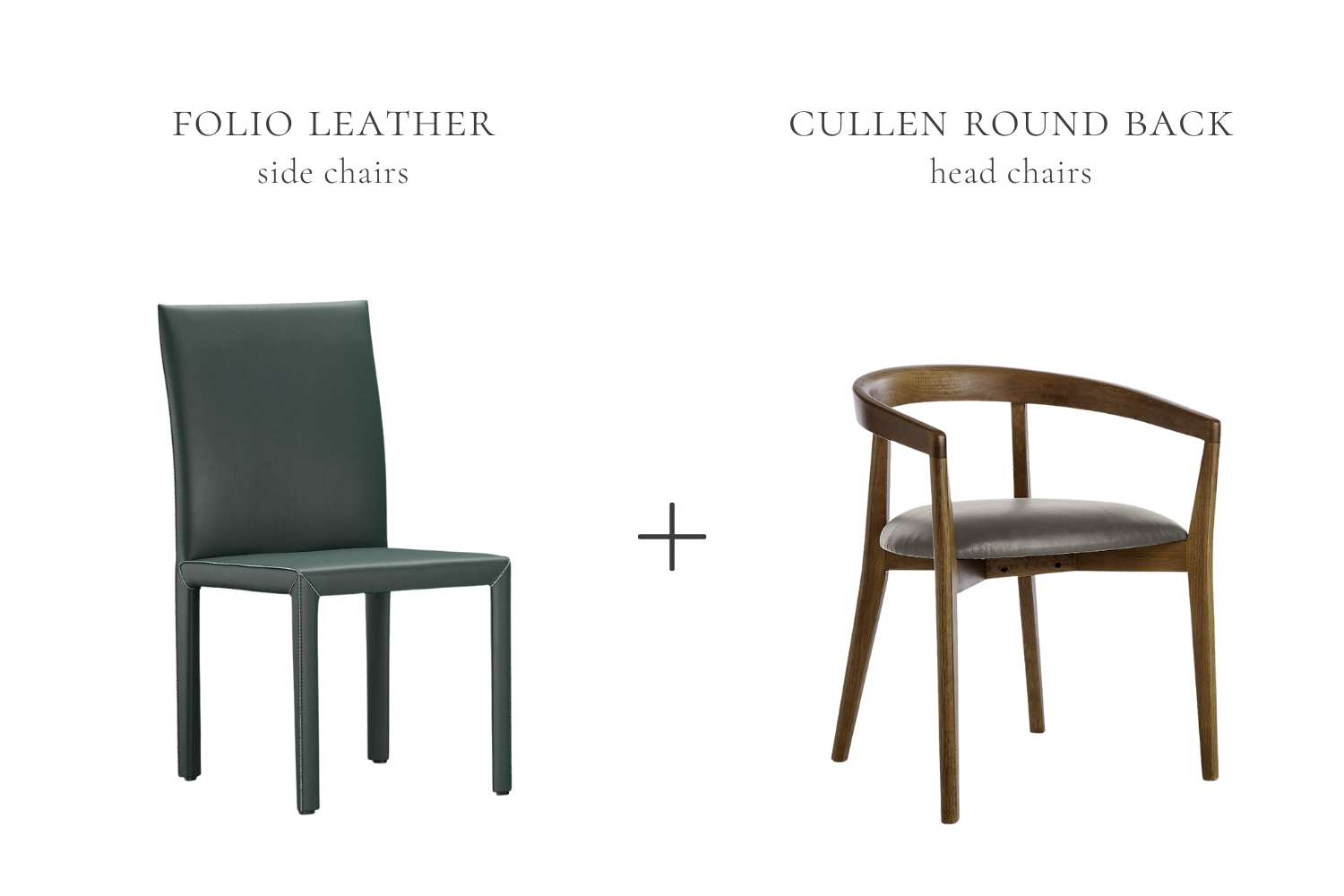
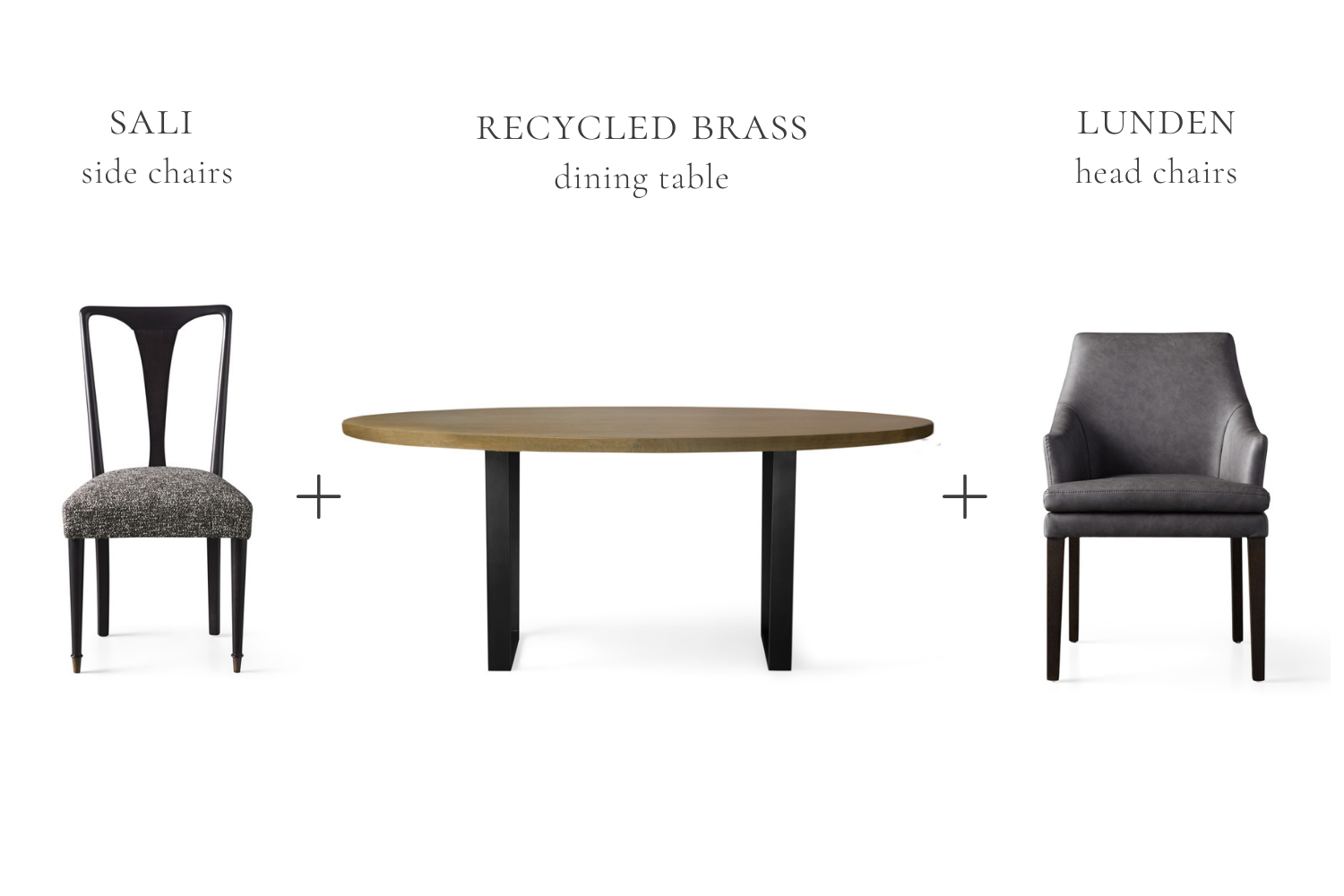
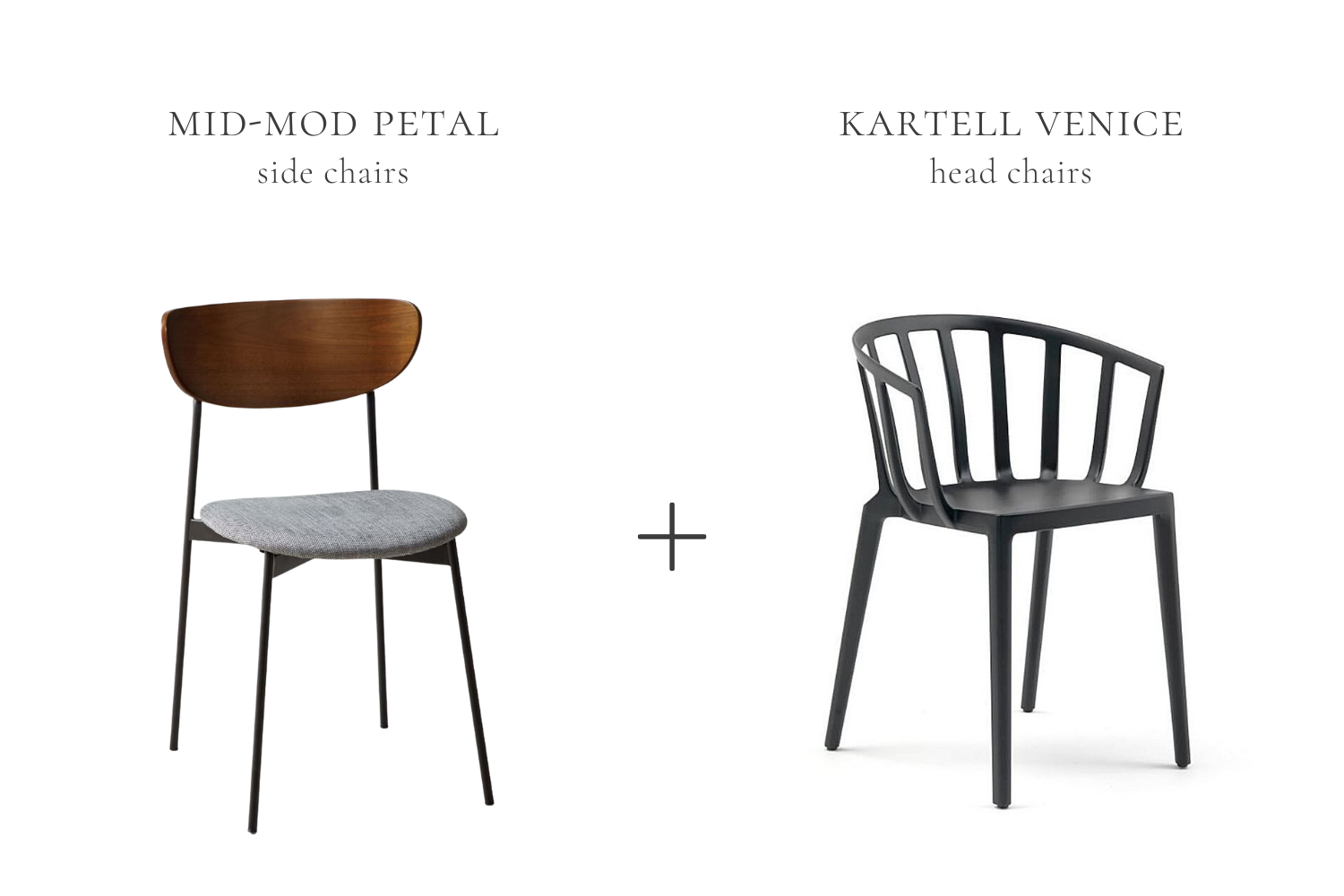
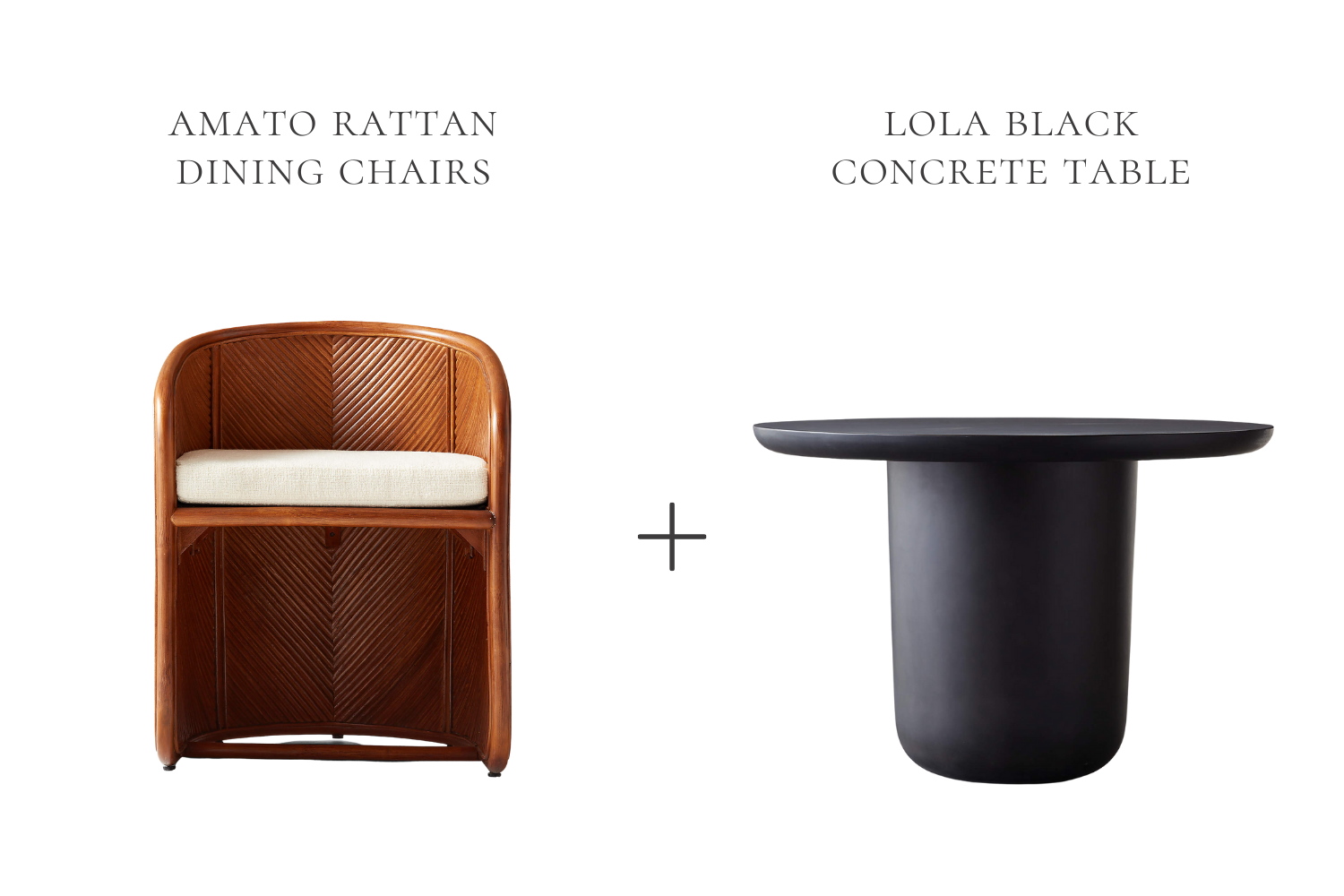
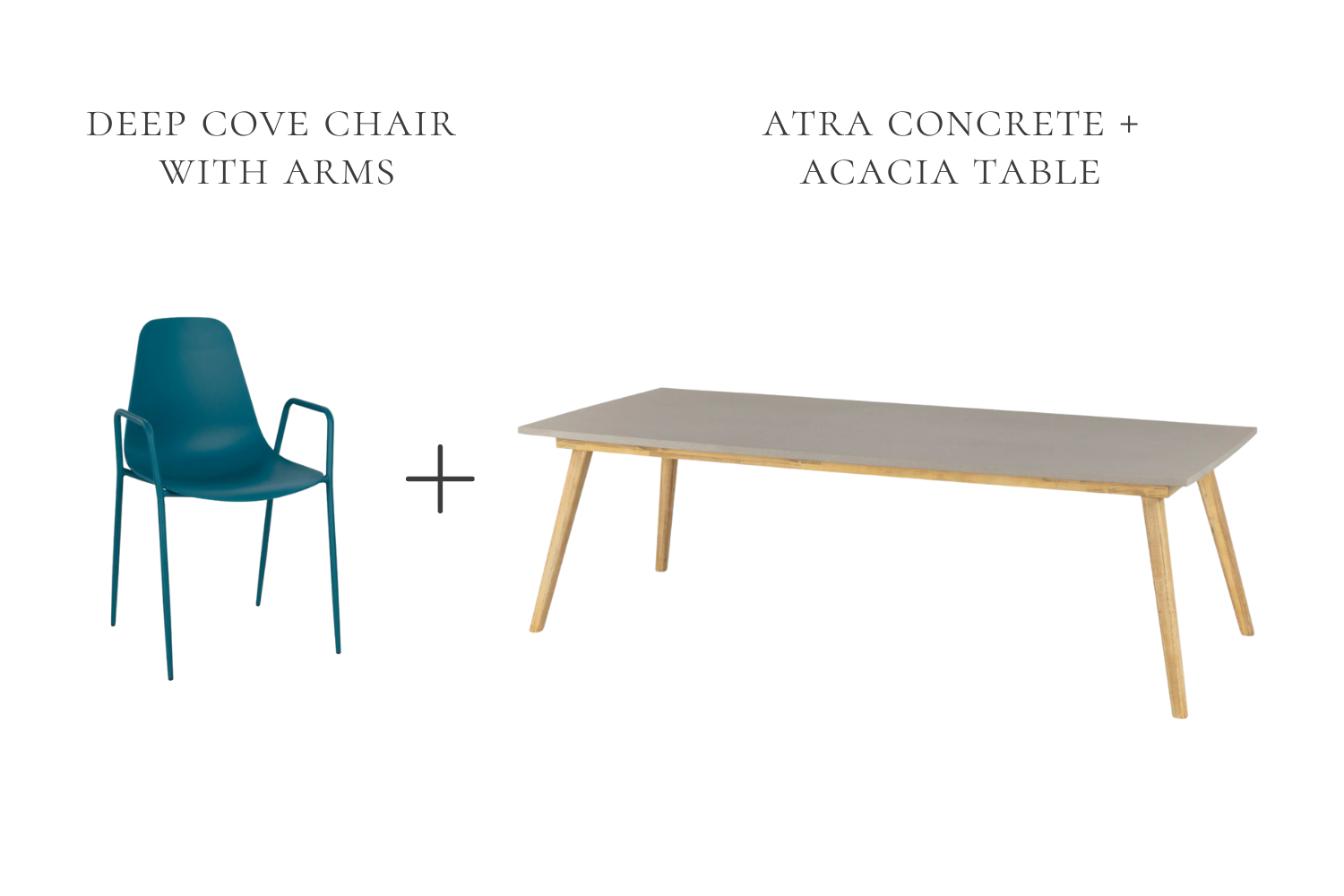
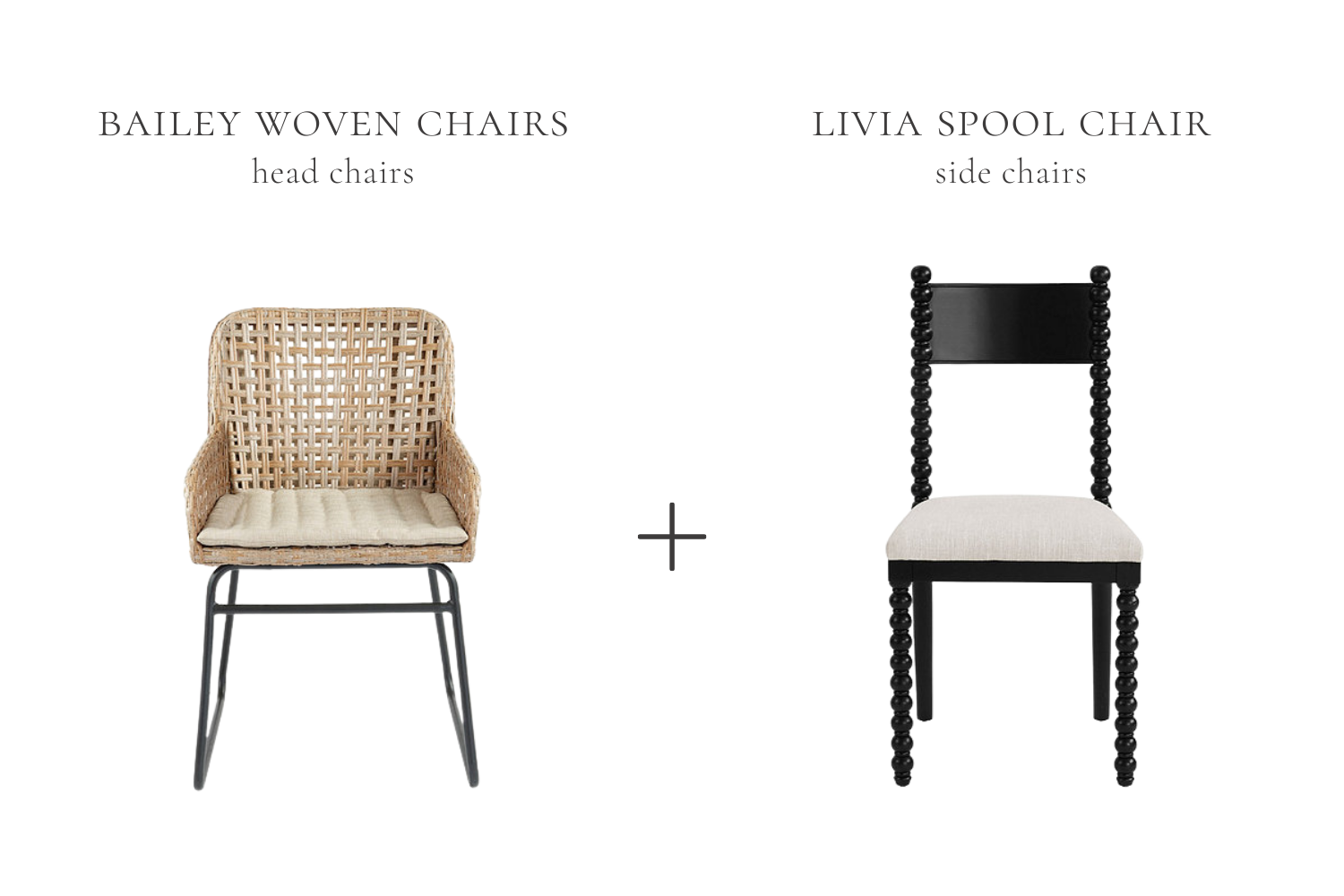
Considering a dining room refresh for the upcoming holidays? A Focused Room Design Guide from Studio 1049 can show you what you could achieve with limited time or budget!




